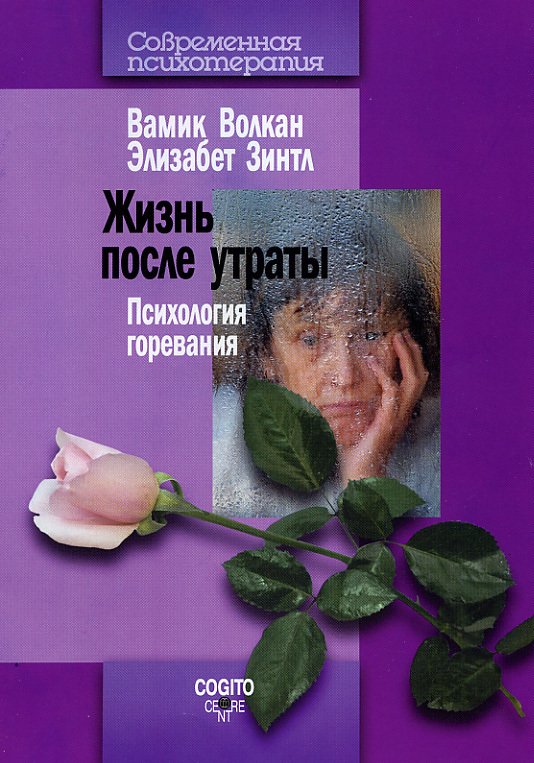R. Dietrich and P. C. Shabad, p. 61–82. Madison, Ct.: International Universities Press.
Osterweiss M., Solomon E., Green M., eds. (1984). Bereavement: Reactions, Consequences and Care. Washington, D. C: National Academy Press.
Parkes Colin M. (1972). Bereavement: Studies of Grief in Adult Life. New York: International Universities Press.
Parkes Colin M., Weiss Robert S. (1983). Recovery from Bereavement. New York: Basic Books.
Philipe Anne (1963). No Longer than a Sigh. Paris: Rene Juilliard.
Piaget Jean (1951). The Child's Conception of the World. London: Routledge and Kegan Paul.
Plath Sylvia (1960). The Collected Poems, ed. Ted Hughes. New York: Harper & Row, 1981.
Pollock George H. (1961). Mourning and Adaptation. International Journal of Psycho-Analysis, 42:341–361.
Pollock George H. (1989). The Mourning-Liberation Process, vols. 1–2. Madison, Ct.: International Universities Press.
Raphael Beverly (1982). The Anatomy of Bereavement. New York: Basic Books.
Robinson Marilynne (1980). Housekeeping. New York: Farrar Straus Giroux.
Rochlin Gregory (1965). Griefs and Discontents: The Forces of Change. Boston: Little, Brown & Co.
Rogers Rita R. (1979). Intergenerational exchange: Transference of attitudes down generations // Modern Perspectives in the Psychiatry of Infancy, ed. J. Howells, p. 339–349. New York: Brunner/Mazel.
Rosenblatt P. C. (1975). Uses of ethnography in understanding grief and mourning. In Bereavement: Its psychosocial Aspects, ed. B. Schoenberg, I. Gerber, A. Wiener, A. H. Kutscher, D. Peretz, A. C. Carr, p. 41–49. New York: Columbia University Press.
Shakespeare William (1981). The Complete Works, ed. G. B. Rison. New York: Harcourt, Brace & World.
Shanfield Stephen В., Swain B. J., Benjamin G. A. H. (1986-87). Parents' responses to the death of adult children from accidents and cancer: A comparison. Omega, 17:289–297.
Shapiro E. R., Zinner J., Shapiro R. L., Berkowitz D. A. (1975). The influence of family experience on borderline personality development. International Review of Psycho-Analysis, 2:399–441.
Strachey Lytton (1921). Queen Victoria. New York: Harcourt, Brace & Co.
Styron William (1979). Sophie's Choice. New York: Random House.
Styron William (1990). Darkness Visible: A Memoir of Madness. New York: Random House.
TahkaVeikko (1984). Dealing with object loss. Scandinavian Psychoanalytic Review, 7:13–33.
Talbot Toby (1980). A Book About My Mother. New York: Farrar, Strauss & Giroux.
Tyler Anne (1985). The Accidental Tourist. New York: Alfred A. Knopf.
Viorst Judith (1986). Necessary Losses. New York: Simon & Schuster.
Volkan Vamik D. (1966). Normal and pathological grief reactions. Virginia Medical Monthly, 93:651–656.
Volkan Vamik D. (1970). Typical findings in pathological grief. The Psychiatric Quarterly, 44:231–250.
Volkan Vamik D. (1971). A study of a patient's «re-grief work» through dreams, psychological tests and psychoanalysis. Psychiatric Quarterly, 45:255–273.
Volkan Vamik D. (1972). The «linking objects» of pathological mourners. Archives of General Psychiatry, 27:215–222.
Volkan Vamik D. (1974). Death, divorce and the physician // Marital and Sexual Counseling in Medical Practice, eds. D. W. Abse, C. M. Nash, and L. M. R. Louden, p. 446–462. New York: Harper & Row.
Volkan Vamik D. (1976). Primitive Internalized Object Relations: A Clinical Study of Schizophrenic, Borderline and Narcissistic Patients. New York: International Universities Press.
Volkan Vamik D. (1979). Cyprus: War and Adaptation: A Psychoanalytic History of Two Ethnic Groups in Conflict. Charlottesville, Va.: University Press of Virginia.
Volkan Vamik D. (1981). Linking Objects and Linking Phenomena: A Study of the Forms, Symptoms, Metapsychology and Therapy of Complicated Mourning. New York: International Universities Press.
Volkan Vamik D. (1982). Identification and related psychic events: Their appearance in therapy and their curative value // Curative Factors in Dynamic Psychotherapy, ed. S. Slipp, p. 153–176. New York: McGraw-Hill.
Volkan Vamik D. (1984). What Do You Get When You Cross a Dandelion with a Rose?: The True Story of a Psychoanalysis. New York: Jason Aronson.
Volkan Vamik D., ed. (1985). Psychotherapy of complicated mourning // Depressive States and Their Treatment, p. 271–295. Northvale, N. J.: Jason Aronson.
Volkan Vamik D. (1988). The Need to Have Enemies and Allies: From Clinical Practice to International Relationships. Northvale, N. J.: Jason Aronson.
Volkan Vamik D., Cilluffo A. E., Sarvay T. L. (1975). Re-grief therapy and the function of the linking object as a key to stimulate emotionality // Emotional Flooding, ed. P. Olsen, p. 179–224. New York. Behavioral Publications.
Volkan Vamik D., Itzkowitz N. (1984). The Immortal Ataturk. Chicago: University of Chicago Press.
Volkan Vamik D., Josephthal D. (1980). The treatment of established pathological mourners // Specialized Techniques in Individual Psychotherapy, ed. Т. В. Karasu and L. Bellak, p. 118–142. New York: Brunner/Mazel.
Volkan Vamik D., Showalter R. C. (1968). Known object loss, disturbance in reality testing and «re-grief work» as a method of psychotherapy. Psychiatric Quarterly, 42:358–374.
Wakerman Elyce (1987). Father Loss: Daughters Discuss the Man That Got Away. New York: Henry Holt & Co.
Weintraub Stanley (1987). Queen Victoria: An Intimate Biography. New York: E. P. Dutton.
Williams Juamta H. (1977). Psychology of Women: Behavior in a Bisocial Context. New York: Norton.
Winnicott Donald W. (1953). Transitional objects and transitional phenomena. International Journal of Psycho-Analysis, 3:89–97.
Wolfenstein Martha (1966). How mourning is possible. Psychoanalytic Study of the Child, 21:93-123.
Wolfenstein Martha (1969). Loss, rage and repetition. Psychoanalytic Study of the Child, 24:432–460.
Zisook S. (1987). Biological Aspects of Bereavement. Washington, D. C: American Psychiatric Press.
Подробнее об Элис см. Volkan, 1981.
Volkan, 1966, 1970, 1972, 1974, 1981, 1985; Volkan, Cillufо and Sarvay, 1975; Volkan and Showalter, 1968; Volkan and Josephthal, 1980.
Все исследователи отмечают одни и те же клинические явления. Классификации различаются в зависимости от теоретической ориентации исследователя. Например, Джон Боулби (Bowlby, 1961), создатель теории привязанности, выделил три фазы процесса горевания, но позже и он, и Колин Паркес (Parkes, 1972) стали выделять уже четыре фазы. Боулби и Паркес описали первую фазу как «оцепенение». Эта фаза длится от нескольких часов до недели. За оцепенением следует фаза тоски по утраченному человеку и стремление вернуть потерю, которая может длиться несколько месяцев или лет. Третьей фазой является дезорганизация, за которой следует четвертая фаза, реорганизация.
Джордж Поллок (Pollock, 1961) проводит различие между острой и хронической стадиями горевания. Затем он разделяет острую стадию на три




